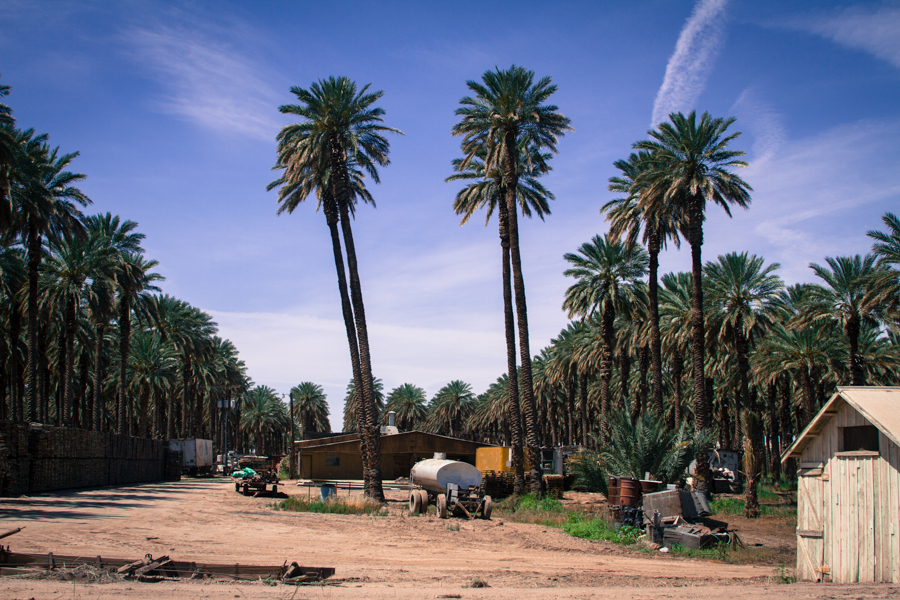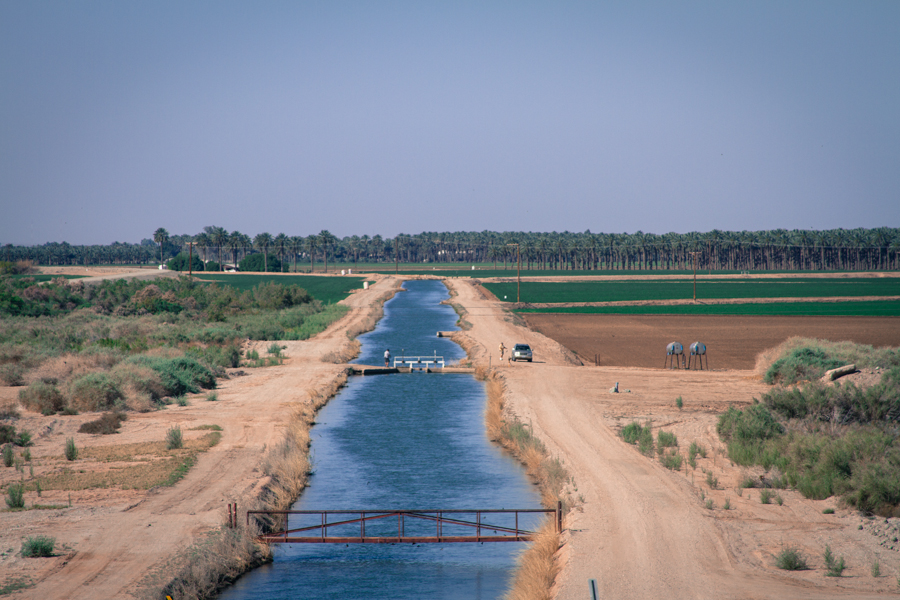I know, I know, beware the romanticism of desert agriculture, but these trees are such a nostalgic throwback to my childhood.
I grew up on the fringe of the Los Angeles suburbs. Trips to the desert were part of my childhood. And date palms along the highway were an iconic image of those jaunts.
The story I heard on my trip last week was that these six trees in the foreground are the original Medjool date trees that came to this area (Bard, in California’s far southeast corner) in the 1940s, and that the trees around them are all direct descendants therefrom. Dates are one of those high-labor, high-value crops that take advantage of desert sun and abundant Colorado River irrigation water.
I’ve been able to trace Imperial County date acreage back to the late 1970s (still haven’t found any older data than that) and see a steady increase in land devoted to these beautiful trees. According to USDA, the California farmers gross about $5,000 per acre growing dates, which puts ’em in the higher end of value per acre and unit water used. But they’re also incredibly labor intensive. This is one of those crops that early farmers in the region thought would make them rich, but it remains a very small portion of the irrigated land down there.
Mostly this was just an excuse to post some pictures that I love. Here’s another:


